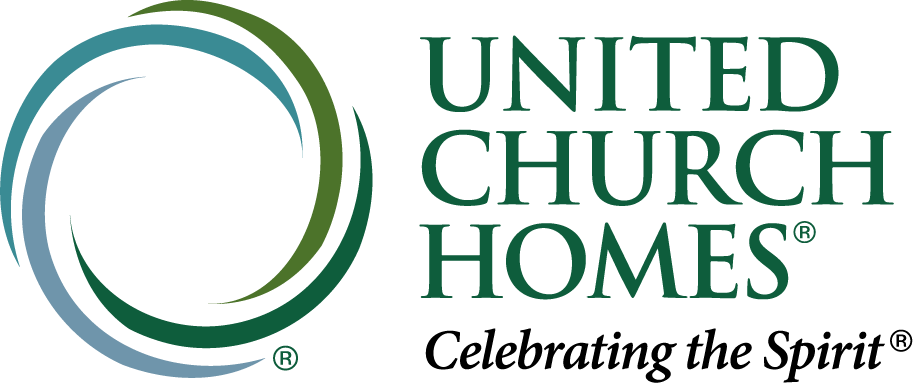“In the courageous standing of uncertainty,
faith shows most visibly its dynamic character.”-Paul Tillich
Inspiration
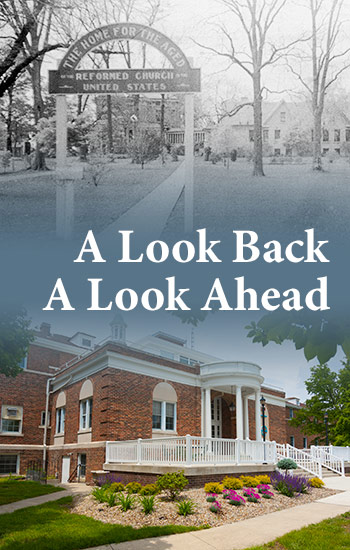 The earliest days of United Church Homes no doubt drew heavily upon the inspiring story of the organization’s founding — a committee of five Toledo church leaders appointed to develop a fledgling ministry, a gift that generated the seed money to establish “a home for the aged,” and the decision to build a visionary facility in Upper Sandusky, Ohio. Each story has within it the seeds of promise, progress and, above all, a high-minded and persistent faith that everything would end up working out alright.
The earliest days of United Church Homes no doubt drew heavily upon the inspiring story of the organization’s founding — a committee of five Toledo church leaders appointed to develop a fledgling ministry, a gift that generated the seed money to establish “a home for the aged,” and the decision to build a visionary facility in Upper Sandusky, Ohio. Each story has within it the seeds of promise, progress and, above all, a high-minded and persistent faith that everything would end up working out alright.
From the vantage point of history, we know how the story has evolved. But a closer look reveals that this ministry endured times of great uncertainty and social turmoil. Our founders shared an inspired faith. They also demonstrated perseverance when the way forward was unclear. Despite wars, depressions, and massive changes in American society, the ministry survived, gained strength, and has endured.
This inspiration runs deeper, indicating that our ministry was often an instrument that revealed the hand of God. There were times, based on a careful reading of annual reports from the organization’s early days, when resources were not available to pay bills or make improvements. As a benevolent institution struggling to survive when dire economic circumstances hit, the “home for the aged” somehow managed to pull through, and to ultimately flourish. But the focus on living out the mission was unwavering, even as the need for the ministry grew.
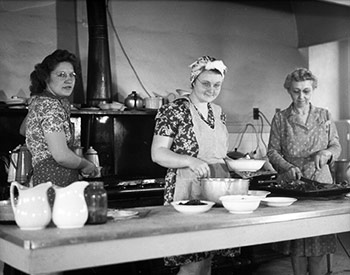 United Church Homes’ success may have been because there was widespread support for the initial idea. It was generally acknowledged that establishing a home to care for vulnerable elders was a good and worthy cause — its mission was essential to the broader sense of community that existed among the founders. There were aged people in many churches, and they were in need. There was no social safety net in place to accommodate people who could no longer work or farm. It was a foregone conclusion that the church could make a difference, take action, and organize the resources to make this idea viable.
United Church Homes’ success may have been because there was widespread support for the initial idea. It was generally acknowledged that establishing a home to care for vulnerable elders was a good and worthy cause — its mission was essential to the broader sense of community that existed among the founders. There were aged people in many churches, and they were in need. There was no social safety net in place to accommodate people who could no longer work or farm. It was a foregone conclusion that the church could make a difference, take action, and organize the resources to make this idea viable.
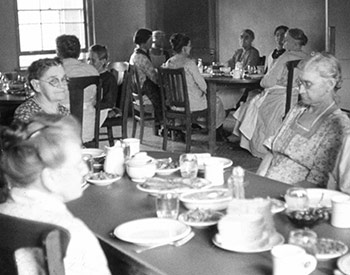 This prevailing sentiment can be found in the first annual report of the Board of Trustees of the Home for Aged People of the Reformed Church in the United States for the period from June 1916 to June 30, 1918:
This prevailing sentiment can be found in the first annual report of the Board of Trustees of the Home for Aged People of the Reformed Church in the United States for the period from June 1916 to June 30, 1918:
“Our Financial Agent, Rev. B. Ruf, … has found open doors and willing hearts wherever he has gone, which is convincing evidence and proof, that members of the Reformed Church do not only welcome this new opportunity for a sincere expression in a noble cause, but are equally willing and ready to support an institution so much needed within the bounds of our Church.”
There were literally thousands of letters sent out during this time asking for financial support — from individuals, churches, and synods — and many who were interested in making a donation first requested a personal visit from Rev. Ruf, the individual who almost single-handedly spearheaded the organization’s financial solicitation. The “ask” letters were sent across a large and expansive territory extending from East Coast metro areas to the prairies of Wisconsin, Minnesota, Nebraska, Kansas, and the Dakotas. There were even donations recorded from people in California.
People understood implicitly the need to care for seniors, and were unfailingly committed to contributing their fair share. In the face of overwhelming, even insurmountable odds, the church’s voice and power were uplifted, and the ministry started out, with $4,011.25 on hand (the equivalent of about $90,000 in today’s currency), on the stable and fertile ground of the American Midwest.
What’s also remarkable is that the initial support came from people who did not use English to communicate. Roughly 50 percent of the responses were written in German, by immigrants and first-generation Americans, an indicator of an intact culture where organizing efforts to help out less fortunate souls was often absorbed by the church, and already understood and appreciated. Our founding reflects a tradition that began in Germany to found helping institutions. From a profound faith and embrace of Jesus’ teachings, the churches respond: See a need. Solve a need. The existence of the need inspired the faithful action to fix it, and demonstrated the power of the community to mobilize efforts when they were called for. In the process, the church helped transform despair into hope, loneliness into community.
That same spirit is alive and active a century later in today’s United Church Homes.
Insight
The ability of those early founders to see a very real need that was unmet in their community provided the insight for a solution to the problem. At the beginning of the 20th century, the average life expectancy was about 50 years, yet there were many individuals who outlived those statistics and their means.
Providing a home where these loved ones could receive the care and support in their later years was the solution. Little did they know that similar needs would not only still be prevalent a century later, but that the original six residents would grow to be over 4,000 — and older adults would still need the church to help alleviate loneliness, isolation, and suffering.
Intimacy
The extant documents of United Church Homes’ history would fit in the trunk of a car, yet they contain extraordinary details.
For anyone whose family tree traces back through Upper Sandusky, Wyandot County, or any one of hundreds of German Reformed, which became Evangelical and Reformed, and ultimately United Church of Christ churches across Ohio and the Midwest, it’s possible to find a connection to a long-forgotten person who prayerfully sent in some support in the early days. Every dime was accounted for, as was every apple, peach, or potato. In fact, gifts in kind may have had more intrinsic value than dollars at one point in time.
These intimate connections — personal, identifiable, and real — underscore the nature of the legacy of United Church Homes. We enjoy a large and growing ministry, impacting tens of thousands of people each year, yet we’ve never forgotten that healthcare is best described as one person caring for another, or that affordable housing gains are secured one household, one family at a time. It represents an incredible gift from our forebears, and one we must carefully protect and preserve for those who will follow in our footsteps.
Initiative
While there were times in the past 100 years when initiatives were perhaps less important than they are today — when it was best to faithfully and simply attend to immediate demands — that does not describe the United Church Homes of today, where we stand on the brink of our second century of service.
Today’s UCH organization is characterized by many initiatives, impacting every nook of our ministry, and we look forward to new approaches which are already taking place today in order to better serve those who are to come.
Innovation
Finally, United Church Homes is not an organization that’s likely to sit still. Innovation is as essential to our culture as breathing. It’s part of our nature. It has to be.
While we may not know precisely what direction innovation will lead us, we know it must always be under consideration, and we must always be prepared to imagine where it will take us.
The same energy and verve we associate with our present course was there generations ago, when decisions — about where to locate, when to grow, what to build, and how to fund future projects — were under consideration. It’s always been there. It always will be just as it is today.
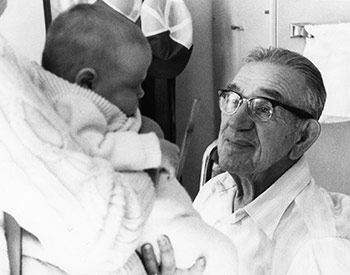
OUR VISION
Where the Spirit
creates Abundant
Life in Community
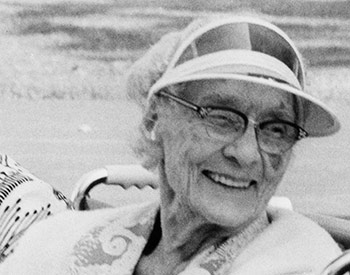
OUR MISSION
To transform Aging by
building a culture of
community, wholeness
and peace.
Centennial Celebration Plans Set
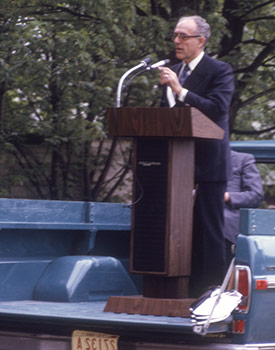 Plans are being finalized to mark the observance of United Church Homes’ 100th anniversary celebration, scheduled to take place July 22-23, 2016, in Columbus, Ohio.
Plans are being finalized to mark the observance of United Church Homes’ 100th anniversary celebration, scheduled to take place July 22-23, 2016, in Columbus, Ohio.
The celebration will begin at the Hilton Columbus at Easton, 3900 Chagrin Drive in Columbus, on Friday morning, July 22. Workshops and presentations are being prepared to share the resources that reflect United Church Homes today.
The celebration will include a reception and dinner for guests on Friday, beginning at 5:30 p.m. at the Creekside Conference Center, 101 Mill Street in Gahanna. The celebration continues on Saturday, July 23, at Westerville Community United Church of Christ, 770 County Line Road in Westerville. The celebration will conclude with a worship service at 1:30 p.m.
One of the highlights on Friday, July 22, 2016, will be the showing of the movie, Alive Inside, a documentary that explores music’s ability to reawaken and revitalize the souls of people suffering with Alzheimer’s disease.
Dan Cohen, founder of the nonprofit organization Music & Memory, uses the film to demonstrate music’s ability to combat memory loss. For anyone who hasn’t seen it already, the movie is a “can’t miss” part of our celebration. For anyone who has seen the film, it’s an experience worth repeating.
Major Partners, Major Presenters
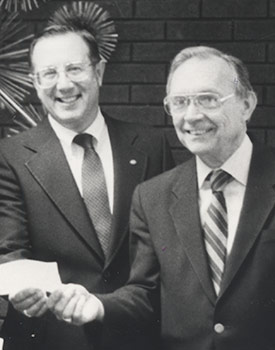 Headlining the two-day celebration are national leaders in the fields of senior living and faith-based ministries who have been chosen to make major presentations. The organizations we’ve invited to join our celebration — the United Church of Christ, LeadingAge, Music & Memory, and the Council for Health and Human Service Ministries — represent key constituencies that have shaped and molded the first century of United Church Homes’ existence, and will continue doing so in the next century.
Headlining the two-day celebration are national leaders in the fields of senior living and faith-based ministries who have been chosen to make major presentations. The organizations we’ve invited to join our celebration — the United Church of Christ, LeadingAge, Music & Memory, and the Council for Health and Human Service Ministries — represent key constituencies that have shaped and molded the first century of United Church Homes’ existence, and will continue doing so in the next century.
“Each featured presenter was chosen because they represent a different facet of what UCH does and what we stand for,” said Rev. Kenneth Daniel, president and CEO. “Our Centennial Celebration is an opportunity for us to reflect on the people and key decisions that have shaped our past, to celebrate where we are today,
and to begin envisioning the future we all aspire to create.”
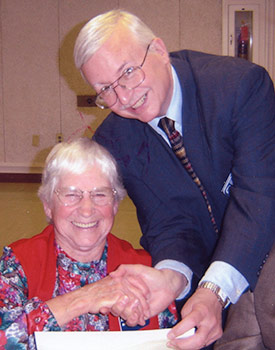 For instance, United Church Homes has been in covenant with the United Church of Christ and its predecessor denominations since our inception 100 years ago. That covenant has served as a steady, constant reminder that our efforts represent a sacred, faith-based ministry, founded on Scriptural principles, and dedicated to translating our Christian faith into action on a daily basis.
For instance, United Church Homes has been in covenant with the United Church of Christ and its predecessor denominations since our inception 100 years ago. That covenant has served as a steady, constant reminder that our efforts represent a sacred, faith-based ministry, founded on Scriptural principles, and dedicated to translating our Christian faith into action on a daily basis.
Rev. John Dorhauer, general minister and president of the United Church of Christ, will preside and preach at the 100th celebration’s closing worship service on Saturday, July 23, at 1:30 p.m. at the Westerville Community United Church of Christ.
LeadingAge is the nation’s foremost association providing support and direction for mission-oriented nonprofits that provide healthcare and housing services to elders across the United States. With more than 6,000 nonprofit member organizations, LeadingAge works diligently to expand the world of possibilities for aging, and to make America a great place to grow old. Its track record in leadership development, education, and advocacy on behalf of seniors distinguishes LeadingAge from other similar associations.
Dr. Cheryl Phillips, senior vice president of advocacy for LeadingAge, will speak about changing the world of aging services on Saturday, July 23, at 11 a.m.
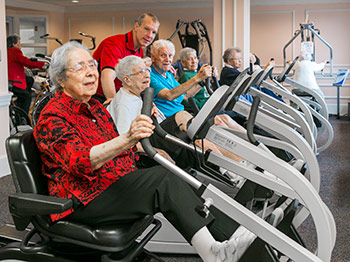 Music & Memory is a relative newcomer to the roster of organizations that are partnering with United Church Homes for its centennial celebration. Music & Memory is a nationally recognized organization that is transforming the treatment and care of people with Alzheimer’s disease, cognitive decline, physical limitations, and other ongoing health challenges. Last year, United Church Homes became a certified provider of the Music & Memory program in all of its healthcare communities.
Music & Memory is a relative newcomer to the roster of organizations that are partnering with United Church Homes for its centennial celebration. Music & Memory is a nationally recognized organization that is transforming the treatment and care of people with Alzheimer’s disease, cognitive decline, physical limitations, and other ongoing health challenges. Last year, United Church Homes became a certified provider of the Music & Memory program in all of its healthcare communities.
Robin Lombardo, regional director for Music & Memory, will lead a panel discussion following the movie screening entitled, Beyond the Movie, the Music & Memory Path, drawing on her experience and knowledge of the program to speak directly to its impact and sustainability.
The Council for Health and Human Service Ministries (CHHSM) is an essential component of the United Church of Christ. Comprised of 73 autonomous organizations affiliated with the UCC that are committed to advancing the healing and service ministries of Jesus Christ, CHHSM’s impact involves nearly $4.0 billion in resources, touching the lives of one million people each year. United Church Homes is an active member of CHHSM, and one of its largest member organizations.
Michael Readinger, president and CEO of CHHSM, will present What’s Faith Got to do With It? on the relevance of faith-based ministries, on Saturday, July 23, at 10 a.m.
Workshops to Advance UCH Mission
In addition to the four major presentations, the 100th anniversary observance will also feature a set of 13 workshops that are designed to cover a wide and diverse array of topics impacting seniors and the process of aging. The workshops address physical, spiritual, emotional, and social issues facing seniors.
Collectively, the workshops are organized along the three elements of United Church Homes’ recently minted mission statement — to transform Aging by building a culture of community, wholeness and peace. Using these ideas as a way to introduce discussions, those attending the centennial celebration will be able to choose to participate in the workshops they find most interesting. The workshops are led by individuals, most with direct ties to United Church Homes, who understand and mirror the organization’s vision to create abundant life.
Community Workshops
- Aging & the LGBTQ Community
- Advocacy 101: Let Justice Roll
- Are You Smarter than a Scam Artist?
- Chair Exercise with Brian
Wholeness Workshops
- Medicare/Medicaid 101
- Alive Inside and Out
- Consistency: Prescriptions & Expectations
- Eating Right for a Healthier You
Peace Workshops
- Suicide and Elders
- Spirituality and Aging
- Spiritual Care for those with Memory Loss and their Families
- Good Morning UCH! Circuit Training
- Intro to Qigong
UCH Initiatives, 2016
Leadership Development
- LeadingAge Academy (National/Ohio)
- Nollau Institute (CHHSM)
- Marion Leadership
- Frost-Parker Scholarships
- Quellhorst Fellowships
- Vocational training (Marion Tech, Ohio State, Kent State, Heidelberg, Bowling Green, Sinclair, among others)
- Seminary internship in Older Adult Ministries
Quality Care Programs
- American Health Care Association Silver/Bronze Award communities
- Chief Medical Officer (AMDA)
- Music & Memory
- Eden Alternative (SEM Haven)
- Bundled Payment Care Initiative demonstration project
Housing Communities Serving Unique Populations
- Native Americans
- Haitian immigrants
- Physically disabled
- Traumatic Brain Injuries (TBI)
Commitment to Spiritual Wholeness
- Clinical Pastoral Education
- Full-time Chaplains
- CHALICE outreach
- Workshops at UCC General Synod
- UCC engagement (national, conference, local)
- Intergenerational programs for congregations
Commitment to LGBTQ Community
- Open & Affirming policies and programs
